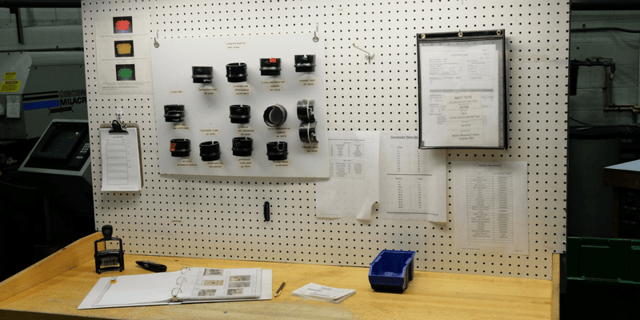Manufacturing companies have a saying, that is, “if you’re doing the same thing you were doing 3 years ago, you are losing money”. Nothing is truer for an industry that requires companies to flow with the current of technology advances and industry standards.
A continuous improvement cycle is the driving force behind advances at Pleasant Precision, Inc., and it’s called POOGI – Process Of On-Going Improvement. The idea is simple, but the process works. What makes POOGI a steady cycle? To begin, we all know that experience is the best teacher.
Identifying
The main point-of-entry into the improvement cycle is where the process is at its most basic, the literal production of goods. Starting at the base-level means taking a hard look at the process and workflow.
As with any business, opportunities for improvement are bound to show up if you keep a close, trained eye on the process. And they’re likely to come up often, no matter how small.
Planning
Identifying the opportunity for advancement is obviously not enough. The next step then, is to explore options. How can the existing process be improved? What is most cost-effective? What has worked in the past? Or what hasn’t worked?
This is where the great minds of a company start going to work. Without developing the proper response to improvement opportunities, nothing can be improved. We know that with self-improvement, simply realizing change is needed will not change a thing – it won’t make us get up and get into shape. There needs to be motivation, reason, and most importantly, a plan.
Executing
Of course planning is not enough either. Changes have to be implemented. The process has to be modified. Like before, this is where the great minds go to work. There is no one better to execute the plan than the ones who made the plan.
Executing an improvement plan means that something has to change, and noticeably. As Henry Ford said, “If you always do what you’ve always done, you’ll always get what you’ve always got.”
Reviewing
Now that the change has been made, has it worked?
Sorry, because we’re not quite done yet. Once plans have been implemented, changes will be apparent. Again, keeping a trained eye on the process is needed in order to confirm whether a plan will be an advancement, a detriment, or nothing at all. If it’s an improvement, then it’s time to celebrate.
The review step can probably be best compared to a check-up appointment. Now that you’ve started to get into shape for your self-improvement plan, it’s time to see the doctor and figure out what’s working. Or maybe you’ll figure out what needs some extra attention.

Repeating
This step might not appear on the plan-do-check-act cycle, but it’s undoubtedly the most important. By nature, a cycle repeats itself. But just to emphasize, constantly repeating the cycle of improvement is a necessity. In fact, it is vital.
The final step of reviewing should flow almost directly into the first step of identifying. It might even be said that the reviewing step is the same as the identifying step. Reviewing means identifying what has worked and what has not, which plans to keep, and what to plan for the future. Once the ball gets rolling, it continues the cycle.
The bottom line is to keep the cycle flowing without breaking it. Once you’re involved in the process of improvement, it will be a well-oiled system that keeps the company rolling toward success.

